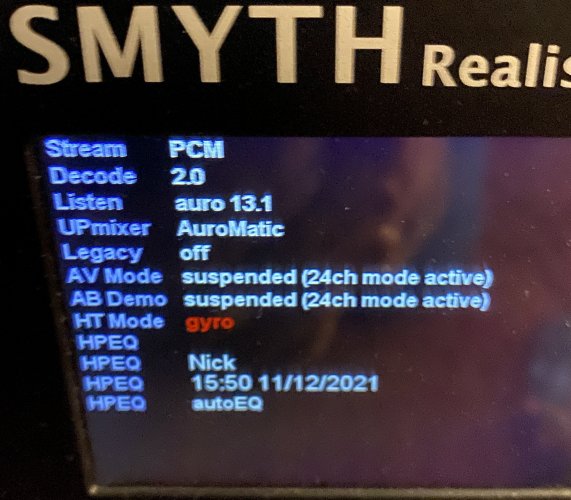Dixter
Headphoneus Supremus
- Joined
- Dec 21, 2011
- Posts
- 2,133
- Likes
- 1,165
Would it be possible that those email messages be posted in original as an archive unless some copyright is involved?
| Bonjour Votre 9è mail pour tout comprendre du Realiser A16. Aujourd’hui, le Realiser Exchange. Point info : si le Realiser est conçu avant tout pour fonctionner à partir de captures personnelles de salles et auditoriums (tout le matériel nécessaire à cette capture est fourni), il est aussi ouvert à des captures tierces, à télécharger sur un club d'échange en ligne : le Realiser Exchange. Ce Realiser Exchange, dont la version bêta est en ligne (https://www.realiserexchange.com/) a 5 fonctions. Chaque utilisateur du A16 y crée son compte personnel, avec le numéro de série de sa machine, dans lequel il pourra :
On peut donc résumer sa fonction principale à une place de marché, dans laquelle stocker et échanger des captures de salles entre utilisateurs du A16. Sur ce point, le Realiser A16 s'inspire directement du Club Realiser, que j'ai créé pour les utilisateurs français du Realiser A8, le prédécesseur. J'y place aussi d'ailleurs des captures exclusives pour le A16, réservées à mes clients. Mais, point intéressant, les captures du A8 sont toutes utilisables avec le A16. Et même si elles ne sont "que" 7.1, chacune peut également être enrichie avec les enceintes Atmos d'une autre capture. Et toute peuvent fournir une excellente base pour la fonction fusion. Car c'est là la vraie innovation voire révolution de ce Realiser Exchange. Dans l'univers du binaural, il est en effet admis que la capture personnalisée est le Graal ; c'est ce qui permet d'obtenir une copie conforme au casque d'un dispositif d'écoute sur enceintes. Le Realiser Exchange ambitionne de casser cette règle en permettant d'utiliser des captures faites au moyen d'oreilles (et donc de personnes) tierces et d'obtenir un rendu approchant la capture personnelle. Comment ? En combinant les données de 2 captures : une non personnelle (la cible), et une autre personnelle. Le seul prérequis est que la position des enceintes dans l'espace soit identique pour les 2 captures. Cette fonction fusion est opérée dans le cloud. Avec possibilité d'écouter avant/après le résultat (cf. point 3). Ce service sera gratuit (du moins, dans un premier temps). Le transfert de fichiers entre le Realiser Exchange et le A16 passe par une carte micro-SD, fournie. | |
| Vos questions : "Quel prix pour un fichier de salle ?" Le Realiser Exchange inclura des fichiers gratuits et payants. Le choix du prix de ces derniers est totalement à l'appréciation des vendeurs (vous, par exemple), d'un montant symbolique à plusieurs centaines d'euros. Le Realiser Exchange prélève une commission pour les fichiers payants, sur le compte du vendeur, nécessaire à son fonctionnement. Attention, une justification de la détention des droits au son (comme le droit à l'image) pourra être demandée, notamment si des informations précises (photos, nom de Studio, de matériel) sont utilisées dans le descriptif. Le saviez-vous ? Tous les fichiers qui sortent du Realiser Exchange sont cryptés, et ne peuvent être utilisés que sur le Realiser A16 du compte de l'abonné. La semaine prochaine : les fonctions futures. | |
Gilles Gerin AV-in |




















